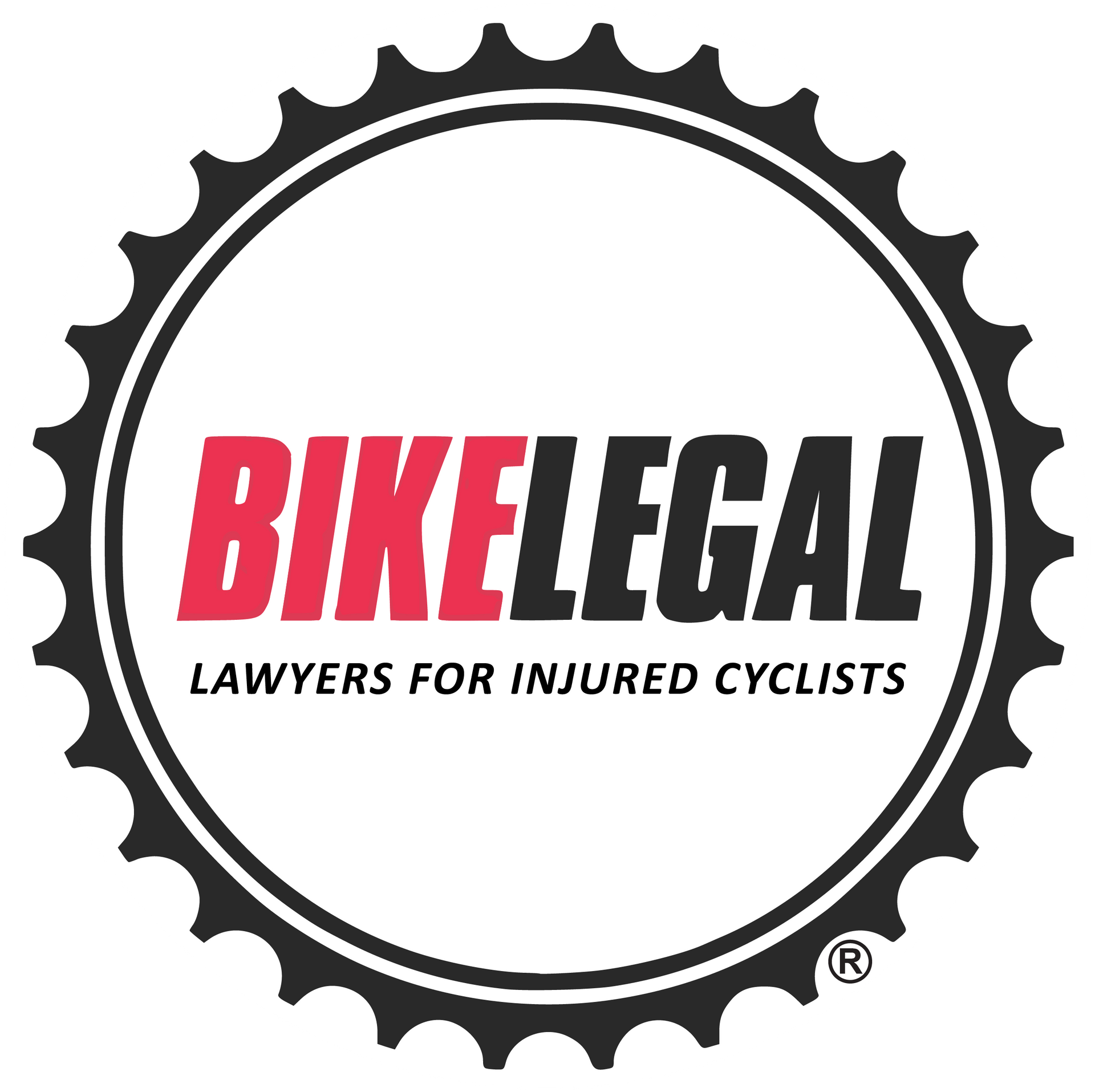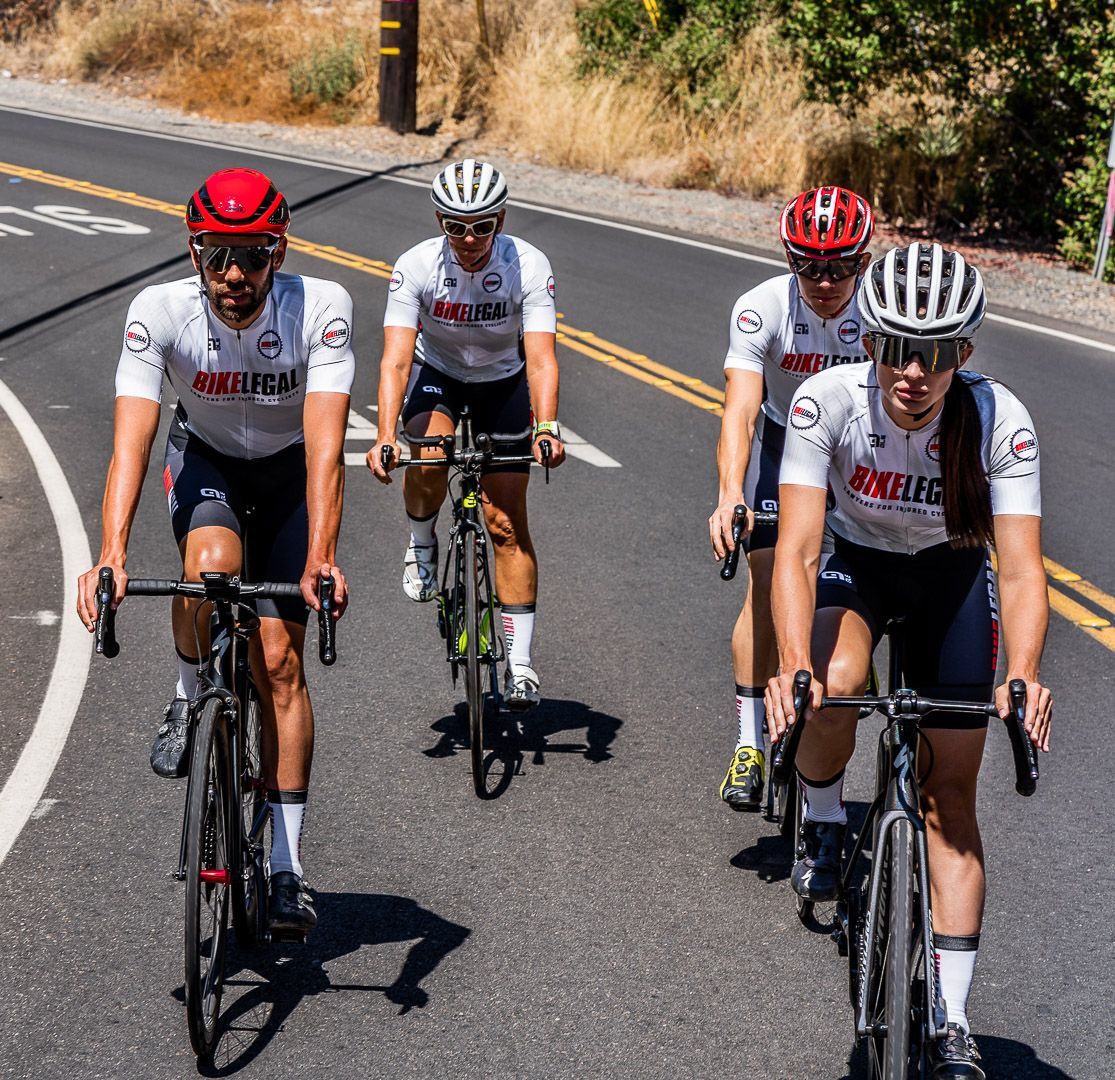A Cyclist's Guide to Handling Road Rage
Follow us on
social media!
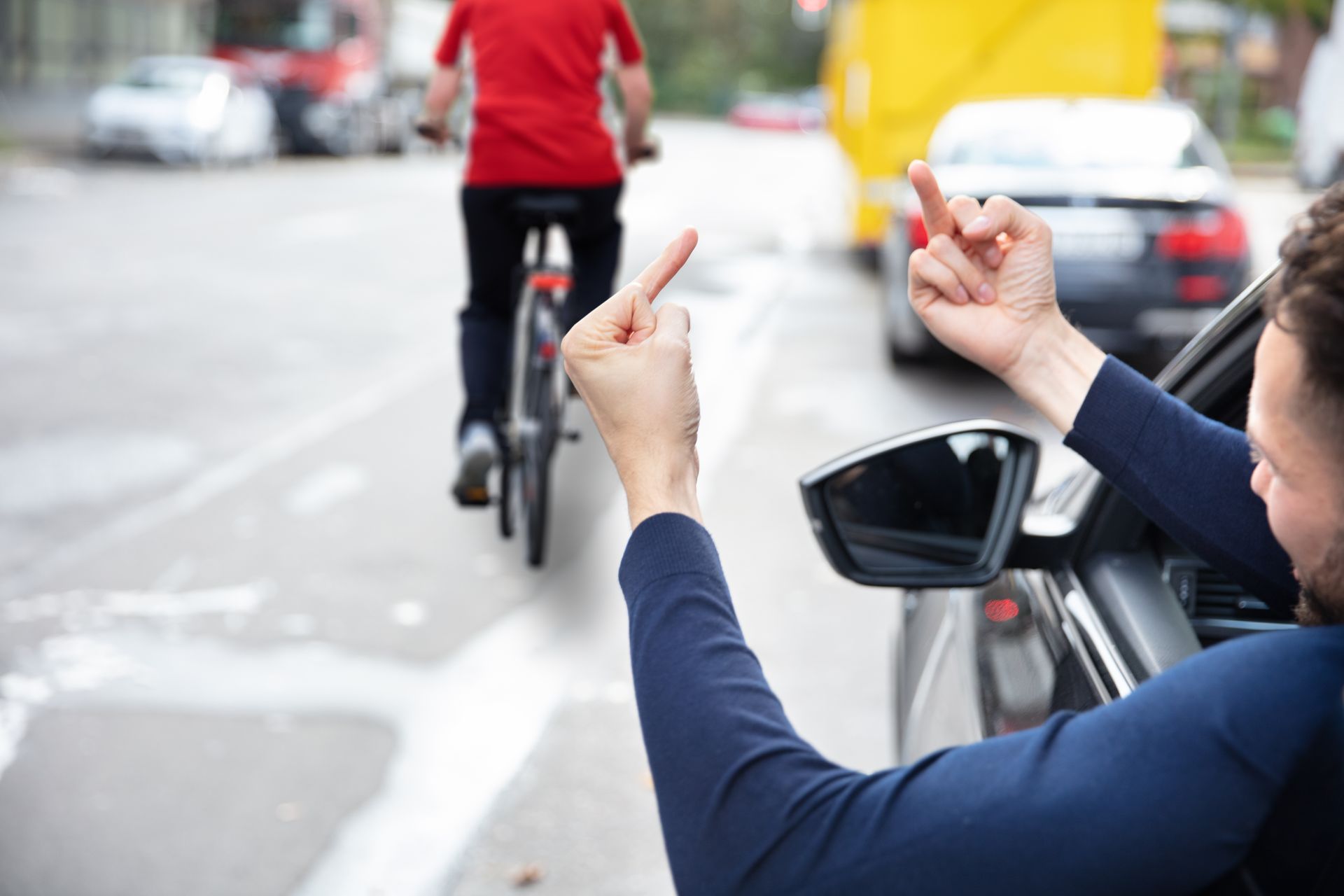
In recent years, the United States has witnessed a disturbing rise in road rage incidents involving drivers and cyclists, sparking intense debates about road safety. The increasing prevalence of these confrontations reflects deeper issues of infrastructure, cultural attitudes towards transportation, and the urgent need for coexistence on shared roadways. The friction between cyclists and motorists has escalated, leading to dangerous and sometimes deadly encounters.
In this article, we're diving deep into the world of bicycles and road rage. Here's what you'll discover:
- The underlying reasons behind road rage.
- Practical tips to avoid such situations while enjoying your ride.
- Effective strategies for handling road rage, (often referred to as bike rage) incidents as they occur.
- Insightful studies and statistics on road rage involving cyclists.
- Your legal rights and what to do if an incident requires legal attention.
Understanding the Connection: Bicycles and Road Rage
Road rage is a prevalent issue in the United States. Approximately 92% of Americans have witnessed driver anger at least once in the past year, and an alarming 89% report being victims of such aggression.
The impact of these incidents is significant, contributing to 218 murders and 12,610 injuries over seven years. Adding to this, regional differences play a significant role in the nature and outcome of road rage incidents. According to a Consumer Affairs report:
- Southern states, which generally have weaker gun laws than the country overall, see double the rates of road rage shooting victims compared to the Northeast U.S., where stricter gun laws are in place.
- In
permitless states, there are
27% more deaths and injuries involving a gun than in states that require a permit. This highlights the intersection of driver rage with broader societal and legal issues.
Common Causes of Road Rage Involving Cyclists
Understanding why bicycles are often at the center of these incidents is crucial for both cyclists and drivers. The reasons behind these incidents are complex and multifaceted:
Misunderstanding and Miscommunication:
- Cyclists encounter unjust blame for traffic disruptions, fueling rage incidents.
- This leads to frustration and anger from aggressive drivers toward cyclists.
- Lack of clear communication between cyclists and drivers can escalate tensions.
Stress in Busy Traffic:
- Traffic congestion amplifies drivers' stress and emotional responses.
- In high-pressure situations and on city streets, drivers may become more prone to reckless driving behaviors.
- Cyclists can become unintended targets of aggression in such traffic.
Differing Road Use Perspectives:
- Drivers and cyclists often have different views on road space utilization.
- Many drivers see roads as primarily for motor vehicles.
- Conflicts arise when cyclists assert their road rights, especially without designated bike lanes.
- Cyclists often face unjust blame for traffic disruptions, leading to rage incidents.
Safety Concerns:
- Cyclists feel vulnerable among larger, faster vehicles.
- Vulnerability increases with drivers' annoyance towards cyclists.
- This mix of vulnerability and impatience can lead to tense encounters and increased rage incidents.
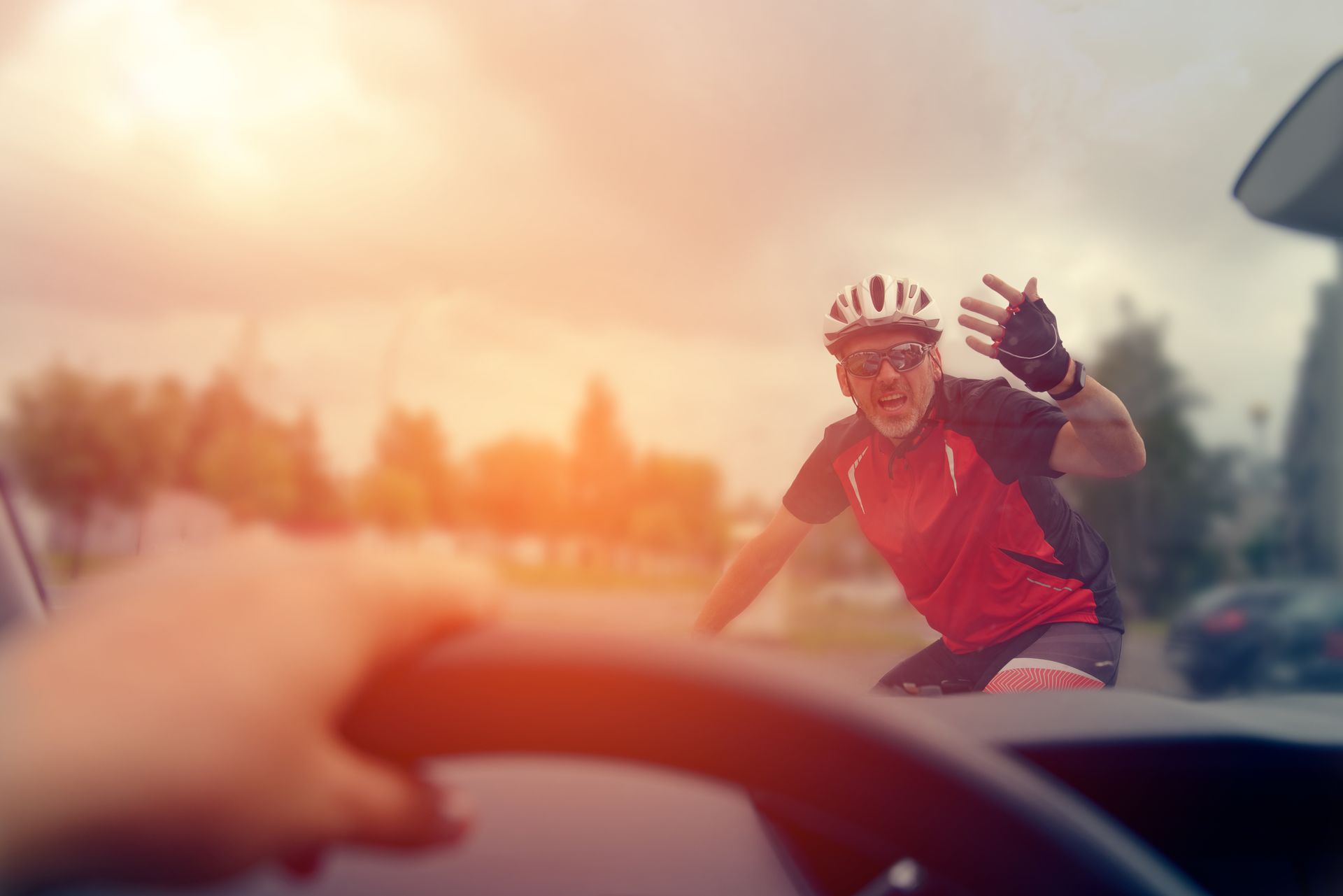
Aggressive Driving and Road Anger
Aggressive driving is a critical factor that often escalates into road rage incidents. The National Highway Traffic Safety Administration (NHTSA) categorizes aggressive driving as a combination of various moving traffic offenses that pose a threat to other people or their property. This behavior encompasses acts like speeding, tailgating, and running red lights.
These actions do more than just raise the likelihood of accidents; they significantly heighten the potential for road anger. This is especially true when it involves a cyclist.
The vulnerability of cyclists can quickly turn an aggressive driver's behavior, such as rude gestures or close overtaking, into a dangerous scenario, making it crucial for all road users to understand and actively work against such behavior.
Tips to Avoid Road Rage While Cycling (Preventative & Situational)
Encountering driver anger can be a daunting experience, especially for cyclists. However, there are effective strategies to minimize these encounters and ensure your rides remain safe and enjoyable.
Here are some accident-prevention tips:
- Know and Follow the Rules: Familiarize yourself with local traffic and bicycle laws. Cyclists are often subject to the same rules as motorists. Adhering to these rules not only keeps you safe but also reduces the likelihood of misunderstandings and frustrations on the road.
- Stay Visible: Use reflective gear and lights, especially during dawn, dusk, and night. Visibility is key to safety and helps motorists see you as part of the traffic flow, reducing surprises and potential conflicts.
- Use Hand Signals: Signal your intentions when turning or changing lanes. This communication helps motorists understand your actions, reducing the chances of provoking impatience or aggression.
Read next: Bicycle Hand Signals for Turning: A Guide for Safe Cycling
- Maintain Situational Awareness: Always stay alert. Anticipate potential hazards and be ready to react calmly. This includes being mindful of the behavior of other drivers around you and preparing for unexpected moves.
- Avoid Eye Contact with an Enraged Driver: Sometimes, making eye contact with an enraged driver can be perceived as a challenge or competition, escalating the situation. Focus on your safety instead.
- Wear a Helmet: Always wear a helmet. It's not just about physical protection; it also signals to drivers that you are a responsible and safety-conscious cyclist.
- Don't Respond to Anger with Anger: If confronted by an angry driver, keep your cool. Responding in kind can escalate the situation, putting you at greater risk.
And here are some situational tips if you're already in a pickle:
- Avoid Confrontation: If the driver stops and attempts to engage in a confrontation, do your best to avoid engaging. Keep your responses brief and non-confrontational if you must speak.
- Remain Calm and Composed: The most important response is to stay calm. Your ability to think clearly and respond rationally is your best tool in a heated situation. Deep breaths can help maintain your composure.
- Do Not Escalate: Avoid doing anything that could further provoke the situation, such as yelling back, making gestures, or maintaining eye contact. Escalation only increases the danger.
- Create Distance: If it's safe to do so, put distance between yourself and the aggressive driver. Alter your route if necessary, even if it means taking a longer path or momentarily pulling over.
- Seek Safety: Look for a public place or a crowded area where you can go if you feel threatened. Being around others can discourage the aggressor from continuing their behavior.
- Record Details: If the situation escalates and you feel threatened, try to remember or record details about the car (make, model, color, license plate) and the driver. This information can be invaluable if you need to report the incident to the police.
- Use Your Phone for Safety: Have your phone accessible to call for help if necessary. If you’re in a safe place to do so, recording the incident can also provide evidence. However, ensure that this action does not escalate the situation.
How to Deal With The Aftermath of a Bike Rage Incident?
In case you find yourself in a driver rage situation while cycling, it's important to know how to handle these challenging moments effectively. Such situations can be both frightening and dangerous, and understanding the right approach is crucial for your safety and legal protection.
Stay Calm and Assess the Situation
When faced with aggressive drivers, your immediate reaction can make all the difference. Keeping your cool is paramount. Remember, responding with anger or frustration can only escalate tensions.
Instead, take a moment to assess the situation. Is it a mere shouting match, or is there a physical threat? In most cases, especially if it's just verbal, the best course of action is to avoid engagement and continue on your journey. Your safety and peace of mind are more important than having the last word when facing bike rage.
Prioritize Your Safety
Your well-being is always the top priority. If the encounter feels dangerous or the aggressor is excessively confrontational, it's crucial to consider safety first. This could mean swiftly exiting the area, heading towards a populated public place, or signaling for help.
Don't hesitate to call 911 if you feel threatened. Remember, it's better to err on the side of caution.
Document the Incident
If the situation allows and you're not injured, use your cell phone to gather as much information as possible.
Jot down the
- License plate number
- Vehicle make and model
- Description of the aggressor
- And the names and contact info of any eyewitnesses
If you can safely take photos or a video, do so. This evidence can be invaluable later, whether you're filing a police report or seeking legal counsel. In the age of smartphones, a quick photo or video can be an excellent tool for documentation.
Report the Incident
If the incident involves physical threats, damage, or violence from the car driver, it's crucial to report it to the police. This is especially important if you were injured or if the event escalated to an assault.
A police report serves as a critical piece of evidence in case legal action becomes necessary. While you may choose not to pursue the matter further, reporting it contributes to broader efforts to track such incidents. This can help authorities in developing strategies to prevent similar occurrences in the future, potentially reducing the risk of crashes and ensuring safer roads for everyone.
Know Your Rights
Understanding your legal rights is crucial. In many states, specific laws protect cyclists. For instance, some areas have laws against harassment of cyclists. Familiarize yourself with local regulations so you know when your rights are being violated. This knowledge not only empowers you but also prepares you for any legal action you might need to take.
Here are some common ones you should know:
- 3-Foot or Safe Passing Laws: Many states (like California, Florida, Illinois, Texas, Utah, Ohio, Colorado, and more) have enacted laws requiring motorists to maintain a minimum distance (often 3 feet) when passing cyclists. This is to ensure cyclists have enough space on the road and to prevent accidents caused by close passing.
- Bike Lane Protections: Where bike lanes are present, laws often protect cyclists' right to use them. Motorists may be prohibited from driving, parking, or stopping in bike lanes.
- Idaho Stop Law (and Variations): Originating in Idaho, this law allows cyclists to treat stop signs as yield signs and red lights as stop signs under certain conditions, acknowledging the physical effort required to stop and start a bicycle. Variations of this law are being considered or have been adopted in other states.
- Dooring Laws: Several states have laws against "dooring"—the act of opening a car door into the path of a cyclist. These laws typically place the responsibility on the person opening the vehicle door to ensure it is safe to do so.
- Safe Storage for Bicycles: Some localities require public buildings and/or employers to provide safe and secure bicycle parking or storage facilities. This is good for cyclists to avoid having their bikes damaged by a vehicle and risking an altercation with the driver.
Seek Emotional Support if Needed
Encountering road anger can be a deeply upsetting experience. It’s important to acknowledge the emotional impact such an incident can have. Don’t hesitate to talk about the experience with friends, family, or a professional counselor. Getting emotional support is crucial for your mental well-being.
Also, look for cycling advocacy groups in your city, where you can talk about your experiences with fellow cyclists and even make new friends to ride with for safety and pleasure.
Consider Legal Advice
If an incident escalates to the point where you face physical harm, property damage, or persistent harassment, seeking expert legal advice is essential. Look for a legal professional or firm specializing in bicycle cases.
Read next: 5 Things to Look for In A Bike Attorney
They can guide you through the process, whether it involves filing a lawsuit for damages or personal injury claims. Having knowledgeable legal support is crucial and can significantly impact the outcome of your case.
In such tense situations, Bike Legal Firm can be your perfect ally. We offer legal support and ensure your case gets the attention it deserves so you can be fairly compensated.
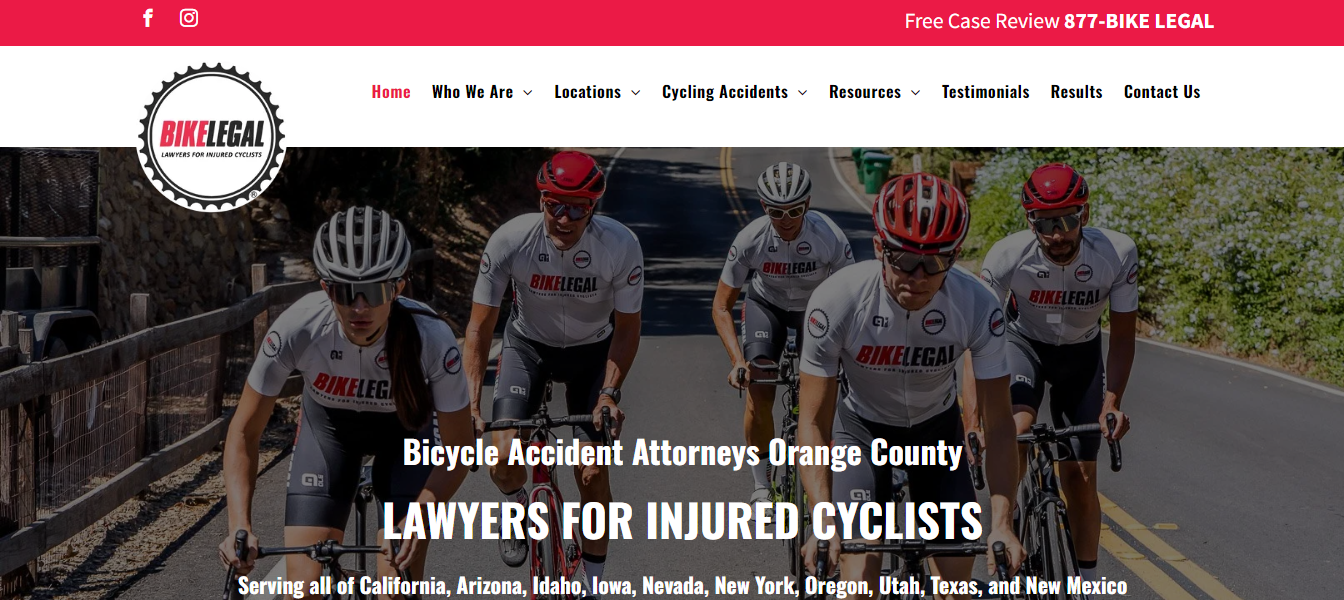
Stay Cool, Stay Safe. Need Legal Help? We Got You.
As we wrap up, remember that cycling is not just about enjoying the ride but also about navigating safely through potential road anger incidents. It's about being smart, aware, and prepared.
Here are the key takeaways to keep in mind:
- Road rage is significantly influenced by regional laws and driving behaviors.
- Miscommunication and stress in traffic often trigger road anger against cyclists.
- Defensive cycling and staying alert can help avoid potential drive rage scenarios.
- Documenting incidents and understanding your legal rights are crucial steps post-incident.
- Seeking emotional and legal support is vital in the aftermath of an aggressive driver encounter.
In the cycling world, challenges like road anger extend beyond physical dangers and legal complexities. Bike Legal Firm is here to help you navigate these circumstances. From handling road rage incidents to defending your rights, we're here to ensure a safe and confident journey.
Request a free consultation by calling 877-BIKE LEGAL (877 245-3534) or submitting a form.
